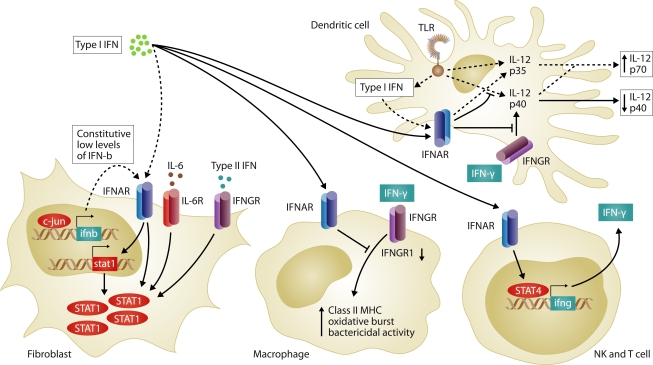Figure 3.
Cross-talk between type I IFN and IFN-γ. High levels of type I IFN (solid arrows) decrease the expression of IFNGR1 and inhibit IFN-γ-induced activation of MHC class II expression, oxidative burst, and bactericidal activity in macrophages. However, low constitutive levels of type I IFN (dashed arrows) prime cells for secondary responses to type I and II IFNs and IL-6 by favoring expression and activation of STAT1 (shown in fibroblasts). In DCs, low concentrations of type I IFN are essential for the optimal production of the IFN-γ–inducing cytokine IL-12p70, whereas higher levels of type I IFN suppress TLR- and IFN-γ–induced IL-12p40 expression, thus dampening IL-12p70 production. Type I IFN can also directly induce the production of IFN-γ in NK cell and T cells via the activation of STAT4.

